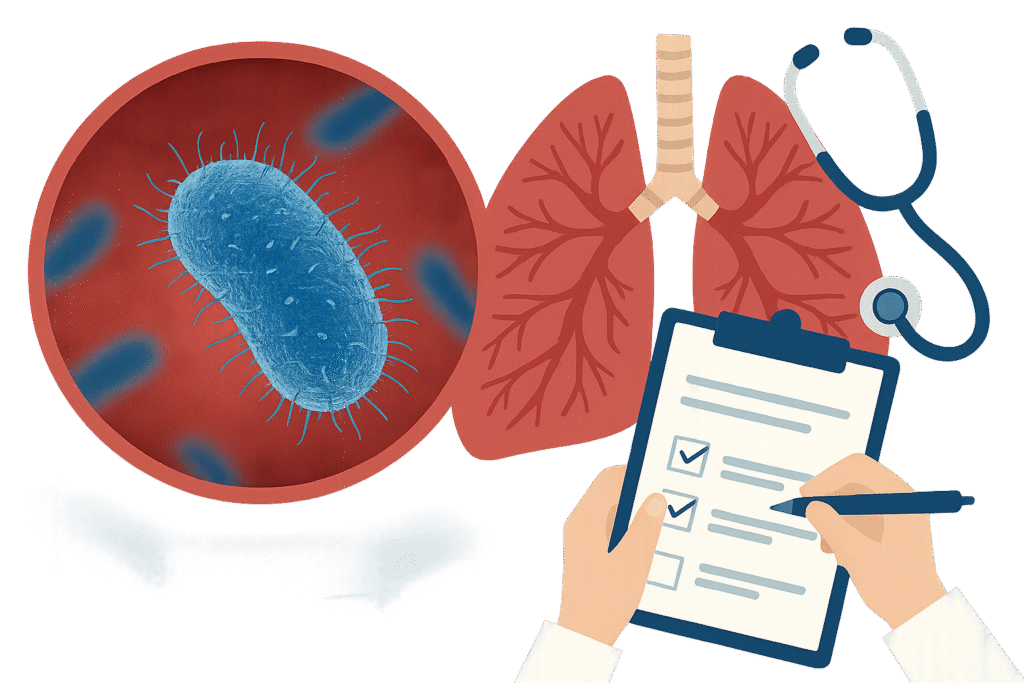If you are a healthcare provider or billing team member, Legionnaires disease medical billing requires close attention. Beyond the clinical risks, this condition brings complex coding, strict reporting rules, and payer scrutiny. Missing details in documentation can quickly turn into claim denials, delayed reimbursements, or even compliance issues.
Table of contents
- What Is Legionnaires Disease?
- Symptoms and Clinical Presentation
- How Legionella Infection Is Diagnosed
- Why Legionnaires Disease Medical Billing Is Complex
- ICD-10 Codes for Legionnaires Disease
- Documentation Payers Expect
- Common Billing Mistakes to Avoid
- Reporting Requirements and Public Health Compliance
- Example: A Successful Claim
- Best Practices for Legionnaires Disease Medical Billing
- Conclusion
- FAQs
What Is Legionnaires Disease?
Legionnaires disease is a severe lung infection caused by Legionella bacteria. The bacteria often spread through contaminated water systems, including:
- Complex plumbing systems
- Cooling towers and HVAC systems
- Hot tubs and whirlpools
- Decorative fountains
Symptoms and Clinical Presentation
Patients usually present with:
- Fever and cough
- Chest pain and breathing difficulty
- Muscle aches and fatigue
- Confusion in severe cases
Because the disease resembles pneumonia, accurate testing and coding are essential for proper billing.
How Legionella Infection Is Diagnosed
Providers often rely on:
- Chest X-rays to detect pneumonia
- Urinary antigen tests for quick confirmation
- Sputum culture or PCR for direct detection
Recording these details is crucial not only for treatment but also for Legionnaires disease medical billing, as payers require proof of diagnostic testing.
Why Legionnaires Disease Medical Billing Is Complex
Billing for infectious diseases comes with added challenges. Since Legionnaires disease is reportable in many states, payers often monitor these claims more closely. Incomplete records, incorrect code sequencing, or missing test results can cause claim denials.
The Financial and Compliance Impact
- Claim denials reduce revenue and increase administrative work.
- Delayed payments affect cash flow.
- Audits can occur if public health reporting does not match claim data.
To strengthen your billing process, consider structured revenue cycle management support. Learn how our Revenue Cycle Management Services can protect your reimbursements.
ICD-10 Codes for Legionnaires Disease
Correct ICD-10 coding is the foundation of successful billing.
Primary Code
- A48.1 – Legionnaires Disease
Related Codes Often Used
- J18.9 – Pneumonia, unspecified organism
- R06.02 – Shortness of breath
- R50.9 – Fever, unspecified
Pro Tip: Always support A48.1 with detailed documentation of exposure, test results, and clinical findings.
Common Codes and Documentation Tips
| ICD-10 Code | When to Use | Documentation Needed | Common Error |
|---|---|---|---|
| A48.1 | Confirmed Legionnaires disease | Positive test or strong clinical evidence with exposure | Coding as generic pneumonia |
| J18.9 | Pneumonia unspecified | Imaging consistent with pneumonia | Omitting link to Legionella |
| R06.02 | Shortness of breath | Symptom documented on exam | Lack of objective findings |
| R50.9 | Fever unspecified | Recorded fever in chart | Not including temperature reading |
Documentation Payers Expect
For Legionnaires disease medical billing, payers require more than just codes. They want to see a complete clinical story.
Required Documentation Elements
- Detailed symptom description (fever, cough, SOB)
- Diagnostic test names and results (urine antigen, culture, imaging)
- Exposure history (travel, building systems, outbreaks)
- Treatment plan (macrolides or fluoroquinolones)
- Progress notes for inpatient stays
- Public health reporting where required
Adding this detail increases approval rates and decreases audit risk.
Common Billing Mistakes to Avoid
Even experienced billing teams make errors when handling Legionnaires disease cases.
- Missing test results in claim submissions
- Incorrect linkage between Legionella infection and pneumonia
- Incomplete inpatient progress notes
- Forgetting public health notification (required in many states)
- Incorrect E/M coding for ER or urgent care visits
A regular chart audit can help catch these errors before submission.

Reporting Requirements and Public Health Compliance
Legionnaires disease is a reportable condition in most states. Providers and labs must notify public health authorities within specific timelines.
Why Reporting Matters for Billing
- Public health reports may be compared against claims
- Missing reports can trigger audits
- Delayed reporting can affect compliance ratings
For official reporting guidance, review the CDC Legionella Reporting Guidelines.
Example: A Successful Claim
A patient presents with cough and fever after staying at a hotel. Tests include a chest X-ray and urine antigen, which confirms Legionella infection. The chart documents exposure, test results, and treatment.
The coder assigns:
- A48.1 (Legionnaires disease)
- J18.9 (pneumonia)
- R06.02 (shortness of breath)
Because documentation is complete, the payer approves the claim without delay.
Best Practices for Legionnaires Disease Medical Billing
Staff Training
Train billing and coding staff on infectious disease documentation. Provide checklists for required elements.
Use of Checklists
Create billing checklists that include test results, exposure notes, and reporting.
Regular Audits
Audit high-risk claims to ensure compliance with payer policies.
Leverage Billing Support
Work with a professional billing team to reduce denials and speed up payments. Explore our Medical Billing Services for tailored support.
Conclusion
Legionnaires disease medical billing is more than a coding task; it’s a test of documentation, compliance, and reporting accuracy. Missing details can cause revenue loss and regulatory risk. With proper coding, clear notes, and timely reporting, providers can reduce denials and secure reimbursement.
At Practice Perfect, we help practices simplify billing for complex conditions. Whether you need training, audits, or full billing support, our team is ready to assist.
Read More About: Does my insurance cover Osteopathic Treatment?
FAQs
The main code is A48.1, with supporting codes like J18.9, R06.02, and R50.9.
It requires precise documentation, exposure details, and compliance with public health reporting.
Ensure test results, exposure history, and treatment details are fully documented.
Yes. Most states require providers and labs to notify local health authorities.




